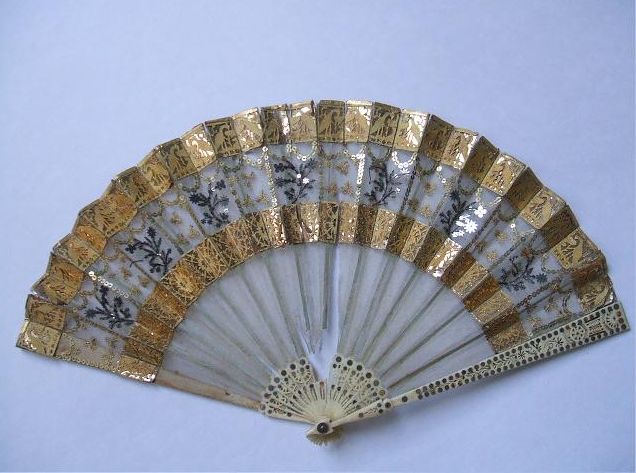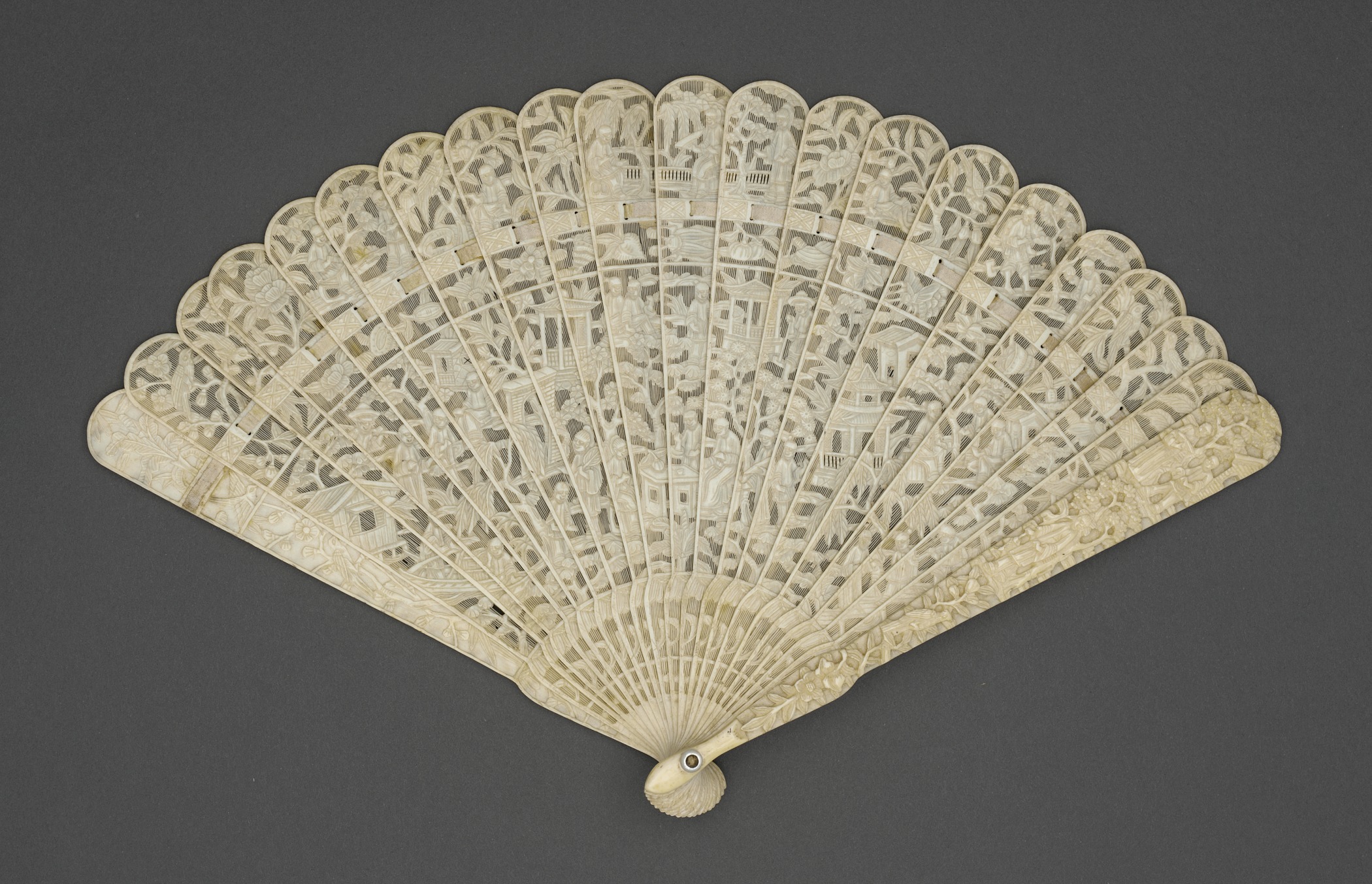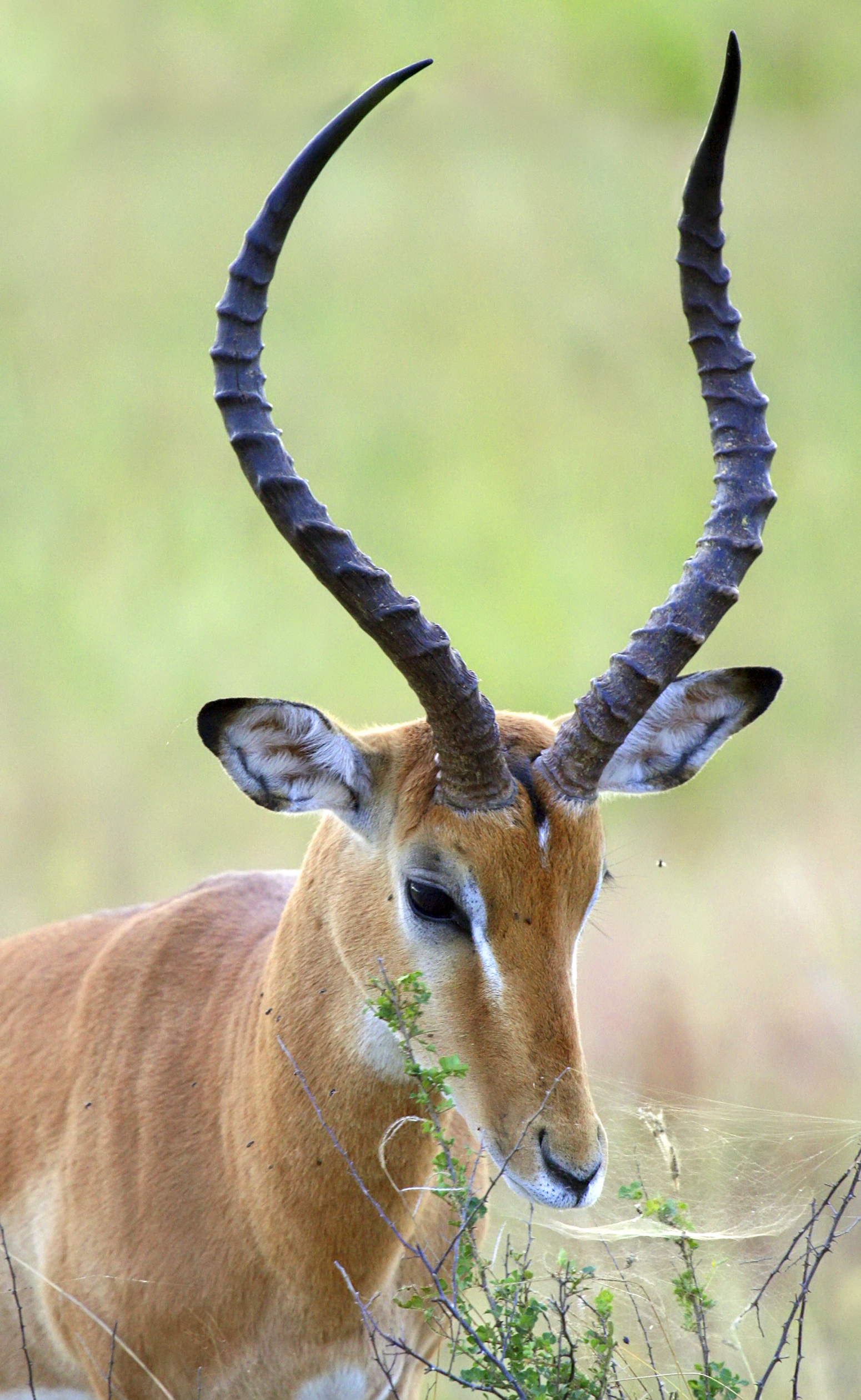|
European Hand Fans In The Eighteenth Century
Hand fans first arrived in Europe in the 15th century from Asia and became popular in the 16th century. Several fan styles were common and a plethora of materials were used to create them. Subject matter varied greatly, from Biblical scenes to landscapes. Hand fans serve as a cooling mechanism, social instrument, and fashion accessory. History Fans were used throughout history, and can be traced back as long as five thousand years ago. They developed in ancient Egypt, India and China, where they were used for ceremonies and practical purposes.Steele, Valerie. The Fan: Fashion and Femininity Unfolded. New York: Rizzoli, 2002. Print. In the 12th century, during the Crusades, the fan was brought to Europe.Alexander, Hélène. Fans. London: B.T. Batsford, 1984. Print. At first, Europeans adopted the rigid fan and feather fans. Queen Elizabeth I of England (1533–1603) owned dozens of these fans, as was shown in her portraits. Later in the 16th century, folding fans were introdu ... [...More Info...] [...Related Items...] OR: [Wikipedia] [Google] [Baidu] |
Hand Fan
A handheld fan, or simply hand fan, is any broad, flat surface that is waved back-and-forth to create an airflow. Generally, purpose-made handheld fans are folding fans, which are shaped like a sector of a circle and made of a thin material (such as paper or feathers) mounted on slats which revolve around a pivot so that it can be closed when not in use. Hand fans were used before mechanical fans were invented. On human skin, the airflow from handfans increases evaporation which has a cooling effect due to the latent heat of evaporation of water. It also increases heat convection by displacing the warmer air produced by body heat that surrounds the skin, which has an additional cooling effect, provided that the ambient air temperature is lower than the skin temperature – which is typically about . Fans are convenient to carry around, especially folding fans. Next to the folding fan, the rigid hand screen fan was also a highly decorative and desired object among the higher cl ... [...More Info...] [...Related Items...] OR: [Wikipedia] [Google] [Baidu] |
Worshipful Company Of Fan Makers
The Worshipful Company of Fan Makers is one of the Livery Companies of the City of London. The company was incorporated by a Royal Charter in 1709. As fan making is now done by machines rather than by craftsmen, the company is no longer a trade association for fan makers. Instead, the Company functions as a charitable establishment. The Fan Makers' Company ranks seventy-sixth in the order of precedence An order of precedence is a sequential hierarchy of nominal importance and can be applied to individuals, groups, or organizations. Most often it is used in the context of people by many organizations and governments, for very formal and state o ... for Livery Companies. Its motto is ''Arts and Trade United''. Further reading * * References External links Official website Fanmakers Organizations established in 1709 1709 establishments in England Ventilation fans {{England-company-stub ... [...More Info...] [...Related Items...] OR: [Wikipedia] [Google] [Baidu] |
Vellum
Vellum is prepared animal skin or membrane, typically used as writing material. Parchment is another term for this material, from which vellum is sometimes distinguished, when it is made from calfskin, as opposed to that made from other animals, or otherwise being of higher quality. Vellum is prepared for writing or printing on, to produce single pages, scrolls, codices, or books. Modern scholars and custodians increasingly use only the less specific, potentially-confusing term "membrane".Stokes and Almagno 2001, 114Clemens and Graham 2007, pp. 9–10. Depending on factors such as the method of preparation it may be very hard to determine the animal species involved (let alone its age) without using a laboratory, and the term avoids the need to distinguish between vellum and parchment. Vellum is generally smooth and durable, although there are great variations depending on preparation and the quality of the skin. The manufacture involves the cleaning, bleaching, stretchin ... [...More Info...] [...Related Items...] OR: [Wikipedia] [Google] [Baidu] |
Wood
Wood is a porous and fibrous structural tissue found in the stems and roots of trees and other woody plants. It is an organic materiala natural composite of cellulose fibers that are strong in tension and embedded in a matrix of lignin that resists compression. Wood is sometimes defined as only the secondary xylem in the stems of trees, or it is defined more broadly to include the same type of tissue elsewhere such as in the roots of trees or shrubs. In a living tree it performs a support function, enabling woody plants to grow large or to stand up by themselves. It also conveys water and nutrients between the leaves, other growing tissues, and the roots. Wood may also refer to other plant materials with comparable properties, and to material engineered from wood, or woodchips or fiber. Wood has been used for thousands of years for fuel, as a construction material, for making tools and weapons, furniture and paper. More recently it emerged as a feedstock for the ... [...More Info...] [...Related Items...] OR: [Wikipedia] [Google] [Baidu] |
Horn (anatomy)
A horn is a permanent pointed projection on the head of various animals that consists of a covering of keratin and other proteins surrounding a core of live bone. Horns are distinct from antlers, which are not permanent. In mammals, true horns are found mainly among the ruminant artiodactyls, in the families Antilocapridae ( pronghorn) and Bovidae ( cattle, goats, antelope etc.). Cattle horns arise from subcutaneous connective tissue (under the scalp) and later fuse to the underlying frontal bone. One pair of horns is usual; however, two or more pairs occur in a few wild species and in some domesticated breeds of sheep. Polycerate (multi-horned) sheep breeds include the Hebridean, Icelandic, Jacob, Manx Loaghtan, and the Navajo-Churro. Horns usually have a curved or spiral shape, often with ridges or fluting. In many species, only males have horns. Horns start to grow soon after birth and continue to grow throughout the life of the animal (except in pronghorns, whic ... [...More Info...] [...Related Items...] OR: [Wikipedia] [Google] [Baidu] |
Mother-of-pearl
Nacre ( , ), also known as mother of pearl, is an organicinorganic composite material produced by some molluscs as an inner shell layer; it is also the material of which pearls are composed. It is strong, resilient, and iridescent. Nacre is found in some of the most ancient lineages of bivalves, gastropods, and cephalopods. However, the inner layer in the great majority of mollusc shells is porcellaneous, not nacreous, and this usually results in a non-iridescent shine, or more rarely in non-nacreous iridescence such as ''flame structure'' as is found in conch pearls. The outer layer of cultured pearls and the inside layer of pearl oyster and freshwater pearl mussel shells are made of nacre. Other mollusc families that have a nacreous inner shell layer include marine gastropods such as the Haliotidae, the Trochidae and the Turbinidae. Physical characteristics Structure and appearance Nacre is composed of hexagonal platelets of aragonite (a form of calcium c ... [...More Info...] [...Related Items...] OR: [Wikipedia] [Google] [Baidu] |
Ivory
Ivory is a hard, white material from the tusks (traditionally from elephants) and teeth of animals, that consists mainly of dentine, one of the physical structures of teeth and tusks. The chemical structure of the teeth and tusks of mammals is the same, regardless of the species of origin, but ivory contains structures of mineralised collagen. The trade in certain teeth and tusks other than elephant is well established and widespread; therefore, "ivory" can correctly be used to describe any mammalian teeth or tusks of commercial interest which are large enough to be carved or scrimshawed. Besides natural ivory, ivory can also be produced synthetically, hence (unlike natural ivory) not requiring the retrieval of the material from animals. Tagua nuts can also be carved like ivory. The trade of finished goods of ivory products has its origins in the Indus Valley. Ivory is a main product that is seen in abundance and was used for trading in Harappan civilization. Finished iv ... [...More Info...] [...Related Items...] OR: [Wikipedia] [Google] [Baidu] |
Tortoiseshell Material
Tortoiseshell or tortoise shell is a material produced from the shells of the larger species of tortoise and turtle, mainly the hawksbill sea turtle, which is a critically endangered species according to the IUCN Red List largely because of its exploitation for this trade. The large size, fine color, and unusual form of the hawksbill's scutes make it especially suitable. The distinctive patterning is referred to in names such as the tortoiseshell cat, several breeds of guinea pig, and the common names of several species of the butterfly genera '' Nymphalis'' and '' Aglais'', and some other uses. Uses Tortoiseshell was widely used from ancient times in the North and in Asia, until the trade was banned in 2014. It was used, normally in thin slices or pieces, in the manufacture of a wide variety of items such as combs, small boxes and frames, inlays in furniture (known as Boulle Work carried out by André-Charles Boulle), and other items: frames for spectacles, guitar picks a ... [...More Info...] [...Related Items...] OR: [Wikipedia] [Google] [Baidu] |
Gold
Gold is a chemical element with the symbol Au (from la, aurum) and atomic number 79. This makes it one of the higher atomic number elements that occur naturally. It is a bright, slightly orange-yellow, dense, soft, malleable, and ductile metal in a pure form. Chemically, gold is a transition metal and a group 11 element. It is one of the least reactive chemical elements and is solid under standard conditions. Gold often occurs in free elemental (native state), as nuggets or grains, in rocks, veins, and alluvial deposits. It occurs in a solid solution series with the native element silver (as electrum), naturally alloyed with other metals like copper and palladium, and mineral inclusions such as within pyrite. Less commonly, it occurs in minerals as gold compounds, often with tellurium ( gold tellurides). Gold is resistant to most acids, though it does dissolve in aqua regia (a mixture of nitric acid and hydrochloric acid), forming a soluble tetrachloroau ... [...More Info...] [...Related Items...] OR: [Wikipedia] [Google] [Baidu] |
Cockade Fan
A cockade is a knot of ribbons, or other circular- or oval-shaped symbol of distinctive colours which is usually worn on a hat or cap. Eighteenth century In the 18th and 19th centuries, coloured cockades were used in Europe to show the allegiance of their wearers to some political faction, or to show their rank or to indicate a servant's livery. Because individual armies might wear a variety of differing regimental uniforms, cockades were used as an effective and economical means of national identification. A cockade was pinned on the side of a man's tricorne or cocked hat, or on his lapel. Women could also wear it on their hat or in their hair. In pre-revolutionary France, the cockade of the Bourbon dynasty was all white. In the Kingdom of Great Britain supporters of a Jacobite restoration wore white cockades, while the recently established Hanoverian monarchy used a black cockade. The Hanoverians also accorded the right to all German nobility to wear the black cockade in the ... [...More Info...] [...Related Items...] OR: [Wikipedia] [Google] [Baidu] |
Hand Fan 1815 1820
A hand is a prehensile, multi-fingered appendage located at the end of the forearm or forelimb of primates such as humans, chimpanzees, monkeys, and lemurs. A few other vertebrates such as the Koala#Characteristics and adaptations, koala (which has two thumb#Opposition and apposition, opposable thumbs on each "hand" and fingerprints extremely similar to human fingerprints) are often described as having "hands" instead of paws on their front limbs. The raccoon is usually described as having "hands" though opposable thumbs are lacking. Some evolutionary anatomists use the term ''hand'' to refer to the appendage of digits on the forelimb more generally—for example, in the context of whether the three Digit (anatomy), digits of the bird hand involved the same Homology (biology), homologous loss of two digits as in the dinosaur hand. The human hand usually has five digits: four fingers plus one thumb; these are often referred to collectively as five fingers, however, whereby the t ... [...More Info...] [...Related Items...] OR: [Wikipedia] [Google] [Baidu] |


.jpg)





